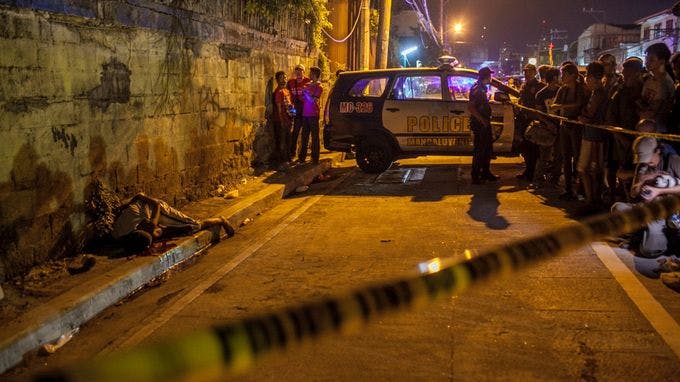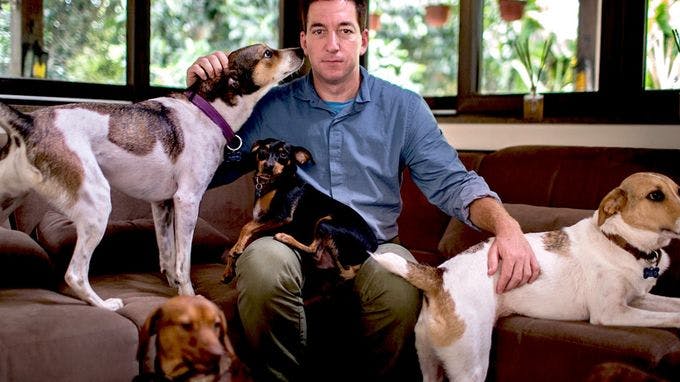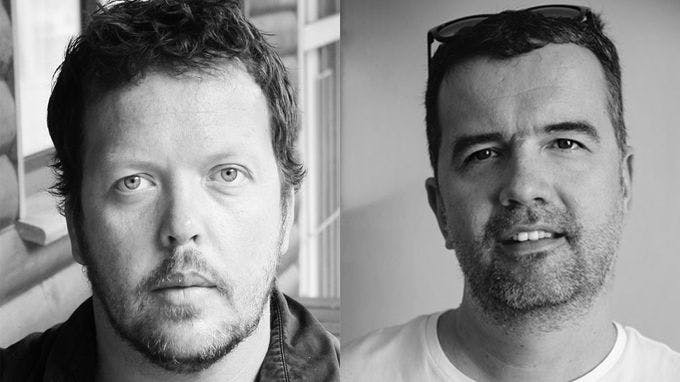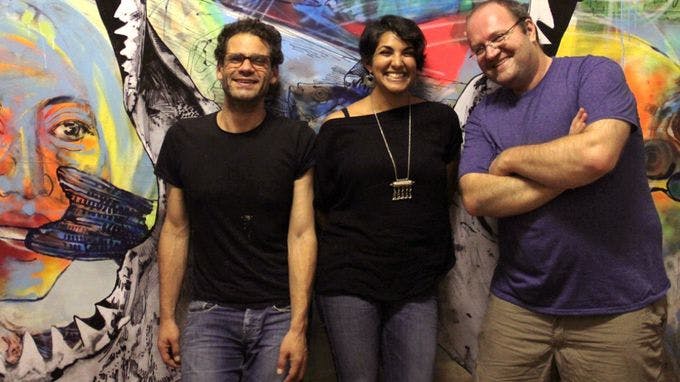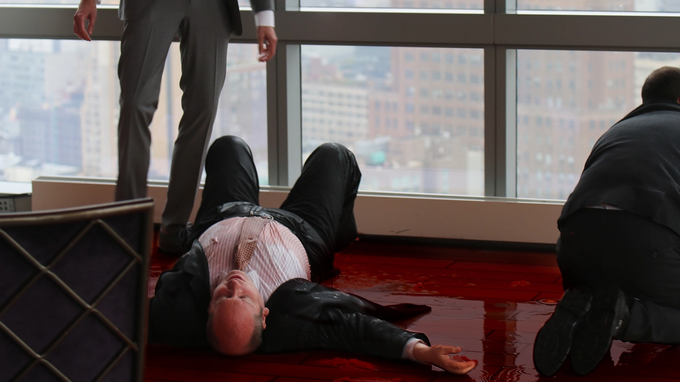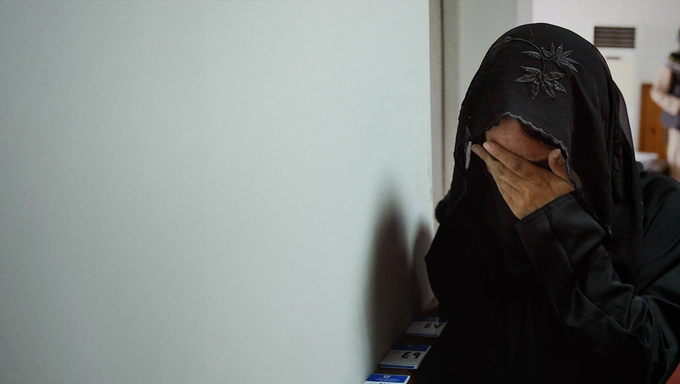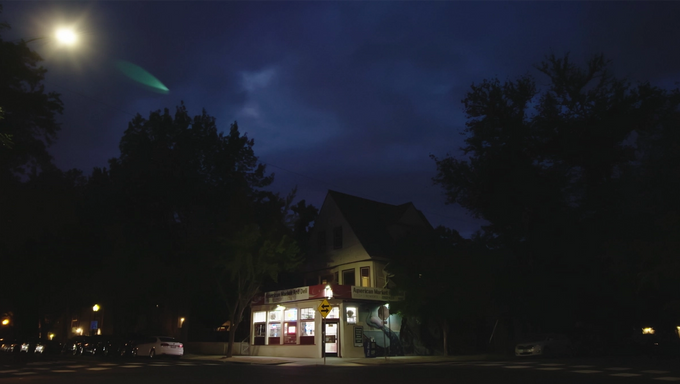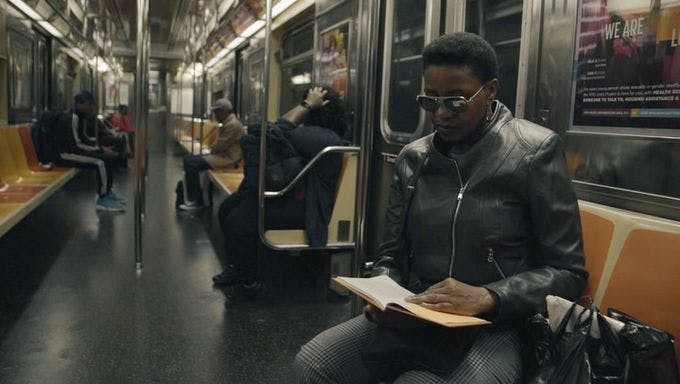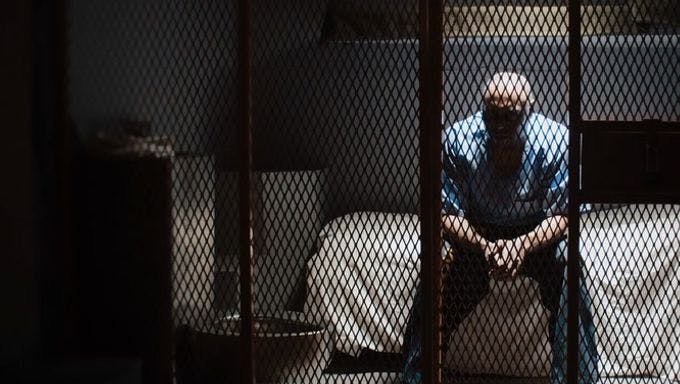It might be a bit too reductive to call attention to the fact that the director of The Above is formidably tall. That is, it might be reductive if Kirsten Johnson didn’t readily do the same. She thinks a lot about her place in the world, about who she is and what she represents to the people she films. When it comes to The Above, her new documentary for Field of Vision, Johnson takes on the parallels between her own camera and that of the surveillance blimp that constantly hovers within the frames of her film. She’s as voluble and direct in person as her work is spare and allusive; The Above is an elegant visual expression of the urgency and density of her ideas. An acclaimed cinematographer, Johnson has also worked with Kirby Dick on several documentaries — Derrida, This Film Is Not Yet Rated, The Invisible War — and collaborated with Field of Vision’s Laura Poitras on her last two features, Citizenfour (which won an Academy Award for best documentary), and The Oath (winner of the Sundance Cinematography Award). A director in her own right — Johnson made the feature documentary Deadline with Katy Chevigny in 2004 — she shepherded the footage that comprises The Above through different shoots and guises before it took on the form of this eight-minute short. The following interview was conducted the day before the film’s premiere at the New York Film Festival.
How did you find out about the surveillance blimp? Johnson: I was filming in the streets of Kabul, Afghanistan, in 2009, working on Women, War & Peace. I saw the blimp and it blew my mind. I had no idea that we were doing that. It was so provocative to me as a visual person. The sky always feels like the territory that frees us from the complexity of human society, and suddenly to see this American thing in their sky was so shocking. I kept thinking of what would it feel like if we had a blimp from another country floating in our sky. And then I just became obsessed with how it looked from different angles. And how wherever I was it could see me. Because I think about lenses a lot, the “if you can see it, it can see you” idea was very provocative to me. Now, I was raised Seventh Adventist, I believed as a child. And there were a couple of different bible verses that basically say that god knows your thoughts before you think them. So that’s always been a primary question in the life of my mind, and I’m reminded of it when I go to Muslim countries because of the call the prayer. I think about how the call to prayer is a sound, is in the air, and there’s a pervasiveness of the ideas, they can reach you anywhere, wherever you are.
It finds you.
Johnson: It’s there with you. Then when the blimp was there, I was like, you’ve got to be kidding me. It’s all here, and acting itself out in this visual way. I was making a different film, but I kept searching for the blimp everywhere I was. And I went on a hike to this hilltop in Kabul, and I couldn’t believe how above the world I felt, and yet the blimp was still above me. It’s very disorienting because sometimes it seems bigger or smaller. Nels Bangerter, the editor, and I had a lot of conversations about what it meant to have the shots of the down blimp in the piece.
It demystifies it a bit.
Johnson: But I felt that understanding the scale of it was meaningful. Because there’s a way in which sometimes it’s almost comic — it’s like a little goldfish, it’s fairly cute. But there’s this incredible contrast between the contemporary-ness of its technology and the landscape of Kabul.
Was it tough to get close to it?
Johnson: Making Women, War & Peace involved shooting some things at the American embassy, and so I asked people about it. I was informally told by the PR person at the embassy that I didn’t have the right to shoot it. And I was like oh, wow, I’m not allowed to shoot the sky? Really? Even though it’s in every one of my shots? Then I started asking people on the street what they thought it was, and what it meant to them. People said things like, “It can see underground.” “It can see underneath burqas.” To some people it was feeling like a transgression in their lives. Then other people totally didn’t care. They thought it was completely ineffective. That god is much more powerful than this little thing in the sky. So there was a huge spectrum of responses to it. I’ve long been a person who’s thought about what Foucault wrote about Jeremy Bentham and the Panopticon, and these institutions where you create setups for people feeling like they’re being watched all the time, even if they’re not necessarily being watched all the time. When I was working on a film in Sudan, every day we had to check in and talk about what we planned to film, but they would also have a list of what we’d filmed the day before — they knew everywhere we were. It was such a revelation that surveillance states can operate without technology, too. Everybody’s in on the deal.
So if the footage wasn’t meant for Women, War & Peace, what context did you imagine for it?
Johnson: I was actually trying to integrate it into a feature-length film, where I followed a one-eyed kid in Kabul and a teenage girl, and I was thinking about all these ideas about visibility and invisibility, and who can be seen. But after we cut that film and I showed it to the young woman, she decided that it was too dangerous for her to be seen in the film. I worked on that film for three years, which included this blimp footage. I mean, I had this girl’s release, but there was no way that I was going to go against her wishes. And the political context really had changed, and it really was more dangerous for her. Laura had seen the Afghanistan movie with this footage in it, and I had always brought it up, like, someday, somewhere …
Someday, somewhere this blimp piece would come out?
Johnson: I have just been holding it and hoping in some way that it would get to exist in the world. It would have broken my heart if the surveillance blimp footage never got shown anywhere, because it does feel like somehow I expressed something visually that’s deeply important to me, politically and emotionally.
It’s a film about seeing and being seen, which is what your job entails and implies.
Johnson: It’s a thing I think about a lot, in terms of my relationship with people I film. Do you have eye contact, do you have their complicity, or are you seeing them from some point of view where they don’t know they’re being seen? So embedded in that way of filming people is a different relationship to complicity or power. So that’s always interesting to me when I’m shooting someone on a really long lens. Or they don’t know that I’m capturing the moment. So I started to collect a body of material where I was looking down at things — imagining what a camera or cameras might see. And that’s what’s interesting in all these things — there’s no possibility for oversight. We have no idea of what the cameras or cameras actually can see. I really love that shot with the woman in the burqa looking up at me.
It’s like there’s in invisible line that you’re working behind, or some invisible wall that, when someone looks back at you like she does, suddenly falls. I would imagine there’s a degree of guilt you feel in those moments.
Johnson: One likes to operate with some illusion that you can be invisible when you’re filming, but you’re not. You’re a person in the place. And you mean a lot there — who they imagine you are, and how you interact with it all. I’m always trying to figure out how I engage in it. But something I just have to accept is that I’m disturbing, that people have not seen anything like me. In this case I was wearing a hijab, but I’m a woman with a camera. Part of the work is accepting who you are, that you are a big white American person with a camera that costs this much money who can get on a plane and leave. But you’re also someone with a sense of humor and someone who’s willing to get physically close to people. All of those things are meaningful to me, so I constantly think about it.
The blimp is cheating in that respect — it abdicates that responsibility, that engagement on a personal level.
Johnson: Even when I was collecting the footage I thought, “What makes me so different from the blimp?” I’m a big white American visible thing. But I don’t get to stay in one position with nobody having any chance to say don’t film me. Because a lot of times when people look back at me and go, “What are you doing?” I’ll turn away. People don’t have that agency in relation to the blimp.
The impulse that you have to look away in that moment is an acknowledgement …
Johnson: That it’s a transgression.
And you have the right to not want me to film you. But the blimp gets away from that entirely. It keeps staying and looking, and there’s no person saying oh you’re right I shouldn’t be here. It’s just a fact. A big fact in the sky.
Johnson: You can’t get around it. It’s always there.
Watching the film, I wasn’t expecting to look down the way you do. I’d gotten used to the idea of being appalled by the blimp, by this interloper in the sky, but then you align me with it. I don’t even want this point of view — except inevitably I also do.
Johnson: I think that’s where I’m always trying to check myself. It’s really easy to be holier than thou in any of this work. Our role in it is incredibly complex. I know that I transgress many people’s desires, their privacy, their boundaries, by my presence when I’m filming. I would like for that not to be the case, and to the extent that I can engage and work with that, I try to. But there are times when I know that I’ve wronged people in the assumption that I could film them. So I can’t detach myself in some ways from the power of the camera.
And sometimes the only way to know is to transgress
Johnson: To have people look at you, and you’re like “ahhh.” One shot that I was dreaming of, that would be impossible and potentially dangerous to get, was to look down on the blimp. When I flew out of Kabul I would be searching for it from the airplane. But scale-wise it was an impossible thing to pull off. And it was probably not a good idea to get in a helicopter in Kabul and fly above it. But that was a shot I wanted.
If you were to go back now, would you attempt to use a drone to get that shot? Being that it’s become more possible in the interim?
Johnson: There’s something about putting my physical person actually in the physical position and moment that matters to me.
And that solution would almost be playing at the blimp’s game.
Johnson: An abdication. That matters to me.

